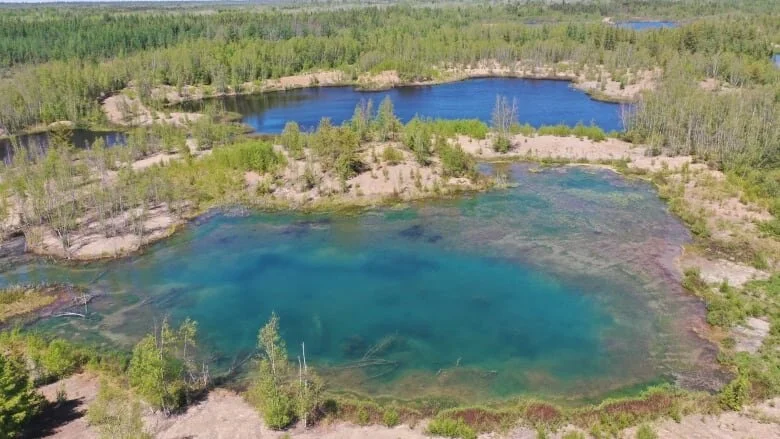In Canada, centring conservation with the country's indigenous peoples is allowing its original stewards to reconnect to their land and culture – and proving remarkably effective. Every year, when the frozen streams have melted and greenery emerges after months of winter stillness, Dolcy Meness knows it's time. Packing their truck, she and a colleague set off through the densely forested hills of Kitigan Zibi Anishinabeg territory, an Algonquin First Nation in the province of Quebec.
Mike ChaarSTAFF eat and drink I Tested 7 Bottles Of Water Sold In Canada & There's One I'll Be Avoiding
I put seven of Canada's bottled water brands to the test to uncover the real composition of their contents. Although it's generally safe to consume bottled water in our nation, I wanted to dig deeper. The question is not just about safety, but about which brands offer the best quality, and which ones you might be better off avoiding. I opted for some of the most popular brands including Flow, Nestlé Pure Life, Smartwater, Aquafina, Naya, Dasani and Eska.
Marketplace tested Perrier, LaCroix, Bubly sparkling waters to see which is most acidic
When it comes to your teeth, sparkling water isn't always as safe as you might think it is. Some flavours could be hazardous to your oral health. To see which products pose the greatest potential risk to your smile, Marketplace tested a number of Perrier, Bubly and LaCroix sparkling water flavours available on Canadian store shelves to find out which are most acidic.
Pemberton Drinking Water System report flags elevated manganese
Village of Pemberton council received its 2020 Drinking Water System annual report during its regular meeting on Tuesday, June 15. While the summary of water quality results for the most part showed levels of chemicals, mercury, and “elements by atomic spectroscopy” well within required limits, there was a concern about manganese levels. On Feb. 26, 2020 at Well No. 2 manganese levels were recorded at 78.8 ug/L and, on the same day at Well No. 3, they were recorded at 20.1 ug/L. Both were flagged on the report as exceeding “1 criteria policy/ level.”
Tropical oasis in N.B.? Nope — just remnants of Minto's mining history
"Every one of these bodies of water are man-made — there's hardly any natural ones here," he said, adding that some of the ponds are more than 30 metres deep. Allison Enright, an assistant professor of aqueous and environmental geochemistry at the University of New Brunswick, has studied the water at the former coal-mining site. She said there are tiny sediment particles in the water, remains from the mining activity and invisible to the naked eye. "They tend to stay floating or suspended within the water of the lake, and then this interacts with the light on the surface and in the water body to give you this really bright blue colour," she explained. As for why some of the ponds are a different colour blue, Enright said it just depends how much sediment is in each body of water. Despite the peculiar hues, she said, it's not dangerous. "In this area, over several decades of efforts to remediate, the pH of this water has been made completely safe," she said.
Metro Vancouver's drinking water pH and alkalinity to increase this spring
Through the use of “natural materials,” the alkalinity of Metro Vancouver’s water will be doubled to about 20 mg/L, expressed as calcium carbonate. The region’s water pH will increase from the existing target of 7.7 to a new target range of 8.3 to 8.5. Health Canada’s guidelines for safe drinking water quality stipulates a pH range from 7.0 to 10.5. During the water treatment process, the regional district already adjusts the pH as the untreated source water is naturally slightly acidic.
Citizen scientists sought for Lake Erie testing
A group dedicated to protecting Canada’s freshwater is looking for citizen scientists to keep an eye on Lake Erie. The Canadian Freshwater Alliance is seeking 40 volunteers to become a Lake Erie Guardian who will test samples from the lake’s watershed. Testing will be done once a month from April to October with kits provided by Water Rangers, a non-profit group that records and analyzes water data. “Partnering with Water Rangers is new in terms of this initiative,” said Raj Gill, who oversees programs for the Great Lakes on behalf of the Alliance. “This is big growth for us.”
Portable water testing kits can be used for 'citizen science' across Canada
Over the last few years, WWF Canada conducted research that showed information on the health of Canada's water was lacking across the country. "We found that 65 per cent of our watersheds didn't have enough data available to understand the health of them," said Heather Crochetiere, senior fresh water specialist at WWF Canada.










